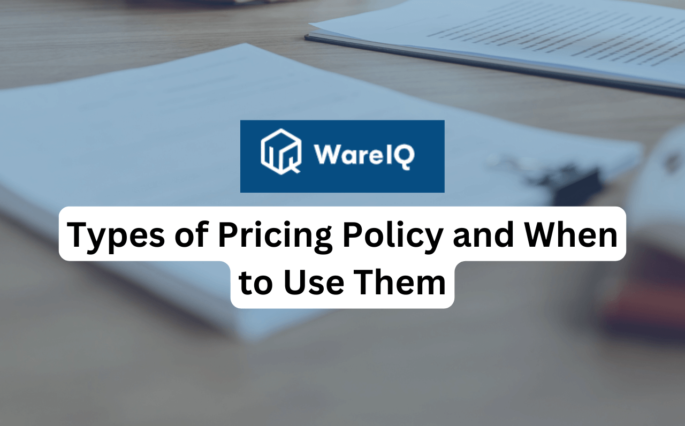Decoding Amazon’s New Pricing Impact on Indian E-commerce


Amazon’s recent announcement of changes to its pricing structure is a significant development that requires careful analysis, especially considering its impact on e-commerce brands operating in India. This article aims to dissect Amazon’s new pricing adjustments, examining the critical changes introduced and their implications for sellers on the platform.
Amazon’s pricing strategy is crucial for e-commerce brands in India as it directly affects their profitability and operational efficiency. The adjustments in referral fees, closing fees, and weight handling fees reflect broader economic factors such as inflation, interest rates, and rising operational costs. Understanding these changes is essential for brands to strategise effectively, remain competitive, and leverage opportunities for growth in a highly dynamic market. This detailed exploration will guide e-commerce brands through the new pricing landscape, helping them to adapt and thrive under Amazon’s updated financial framework.
- Critical Changes in Amazon's New Pricing Structure
- Macroeconomic Factors Influencing Amazon's New Pricing
- Impact of Amazon's New Pricing on E-commerce Brands in India
- Amazon's Commitment to Seller Profitability and Growth
- Conclusion
- FAQs About Amazon’s New Pricing
- How will the new pricing structure affect my e-commerce brand's profitability?
- Are there any categories where referral fees have been reduced?
- How much has the closing fee increased for items with an average selling price of more than Rs 1000?
- Why has Amazon increased the weight handling fee?
- How can I adjust my pricing strategies in response to Amazon's new pricing structure?
Critical Changes in Amazon’s New Pricing Structure
Amazon’s recent revision of its pricing structure introduces several fundamental changes that directly impact e-commerce brands operating on its platform in India. These adjustments are primarily focused on referral fees, closing fees, and weight handling fees, each tailored to different product categories and operational demands. Here’s a breakdown of these crucial changes:
A. Revision in Referral Fees
- Reduction in Categories: Amazon has reduced referral fees for specific product categories, including apparel, bedsheets, cushion covers, and dinnerware. This reduction is likely aimed at encouraging sellers in these categories by lowering the cost of selling on the platform.
- Increase in Categories: Conversely, referral fees have increased for categories such as business and scientific supplies, chimneys, laptop sleeves and bags, and tyres. This increase could be a response to the higher logistical and service demands associated with these products.
B. Increase in Closing Fee
- Amazon has implemented an increase in the closing fee for items with an average selling price of more than Rs 1000. This adjustment may be intended to offset higher processing costs and align the pricing structure with economic inflation impacting operational expenses.
C. Increase in Weight Handling Fee
- In line with inflationary increases in shipping costs, Amazon has also raised its weight handling fees. This change reflects the rising costs of logistics and is critical for maintaining service quality in the face of escalating transportation expenses.
Macroeconomic Factors Influencing Amazon’s New Pricing
Amazon’s decision to adjust its pricing structure is not made in isolation; it reflects broader macroeconomic factors that impact its operational and logistical costs. Understanding these factors is crucial for e-commerce brands to anticipate future trends and align their strategies accordingly. Here are some of the vital economic influences:
A. Inflation
Inflation affects almost every aspect of business operations, from the cost of goods sold to the expenses associated with warehousing and logistics. Amazon’s increase in fees, especially in weight handling and closing fees, is a direct response to inflationary pressures that increase operational costs.
B. Interest Rates
The economic environment, including interest rates, influences Amazon’s cost of capital and operating costs. Higher interest rates can lead to increased borrowing costs, which may be partially offset by higher fees charged to sellers on the platform.
C. Operational Costs
Amazon’s operational costs include logistics, warehousing, and shipping, all of which are susceptible to fluctuations in fuel prices, labour costs, and other expenses. As these costs rise, Amazon adjusts its pricing structure to maintain profitability and ensure the sustainability of its business model.
Impact of Amazon’s New Pricing on E-commerce Brands in India
The recent adjustments in Amazon’s pricing structure will have a profound impact on e-commerce brands operating in India. These changes, driven by a combination of strategic business decisions and external economic factors, bring both challenges and opportunities for sellers on the platform. Here’s how these changes are likely to influence e-commerce brands:
A. Cost Implications for Sellers
The increase in referral fees, closing fees, and weight handling fees means that sellers will face higher direct costs associated with listing and selling products on Amazon. This could lead to increased product prices to maintain profitability, potentially affecting sales volume and competitive positioning in price-sensitive market segments.
B. Opportunities for Growth and Efficiency
Despite the initial challenge of increased costs, these changes can also drive brands to optimise their logistics and supply chain management. For instance, the reduction in referral fees in specific categories like apparel and home decor could encourage sellers to expand offerings in these areas. Additionally, the necessity to absorb or offset increased costs may push brands towards greater operational efficiency and innovative cost-saving measures.
C. Competitive Landscape and Pricing Strategies
The changes in Amazon’s fee structure are likely to influence the platform’s overall competitive dynamics. Brands might need to rethink their pricing strategies to remain competitive while still being profitable. This could also lead to an increased focus on differentiating products and services, enhancing customer service, and investing in marketing efforts to build brand loyalty and justify higher prices.
Amazon’s Commitment to Seller Profitability and Growth
Despite the adjustments in the pricing structure that may present initial challenges to sellers, Amazon continues to emphasise its commitment to supporting the profitability and growth of its sellers, particularly small and medium enterprises (SMEs). This commitment is evident in several ongoing initiatives and support mechanisms:
1. Support for Small and Medium Businesses
Amazon provides various programs and tools designed to help SMEs thrive on its platform. These include dedicated seller support services, training programs to enhance digital skills and marketing tools that help sellers optimise their product listings and reach a broader audience. These resources are particularly beneficial for smaller sellers who may need more resources than larger companies.
2. Digitisation and Growth into Strong National Brands
Amazon is actively encouraging sellers to adopt digital solutions that streamline operations and improve efficiency. These include using advanced analytics to understand better consumer behaviour, inventory management tools to optimise stock levels, and automated marketing strategies to increase product visibility. By leveraging these technologies, sellers can transform their operations and grow into strong national brands with a significant online presence.
Amazon’s strategies are structured around creating a sustainable ecosystem where sellers can flourish despite the ever-evolving market challenges. By investing in seller success, Amazon not only enhances its marketplace attractiveness but also fosters a competitive environment where quality and innovation lead the way. This approach ultimately benefits consumers with better products and services, thereby reinforcing the health and growth of the e-commerce sector in India.
Related read: Your Roadmap for Switching Fulfillment Partners
Conclusion
The recent restructuring of Amazon’s pricing model marks a significant shift for e-commerce brands operating within the Indian market. This change, reflective of broader economic pressures and Amazon’s strategic adjustments to its operational model, offers sellers both challenges and opportunities. As brands navigate these new pricing regulations, understanding the intricacies of each fee adjustment—from referral fees to weight-handling changes—is crucial. These adjustments necessitate a thoughtful analysis of pricing strategies, operational efficiencies, and market positioning to maintain competitiveness and profitability.
For e-commerce brands, adaptation and strategic planning are essential. Embracing Amazon’s support mechanisms, leveraging digital advancements, and optimising operational processes will be crucial to thrive under the new pricing regime. As the landscape continues to evolve, brands that can agilely adjust and who proactively engage with these changes will find themselves well-placed to capitalise on the growth opportunities provided by Amazon’s vast marketplace. Ultimately, this period of adjustment is not just about coping with increased costs but about seizing the chance to refine business models and emerge more robust, more competitive, and customer-focused.
FAQs About Amazon’s New Pricing
How will the new pricing structure affect my e-commerce brand’s profitability?
Amazon’s new pricing structure could impact your brand’s profitability through increased operational costs, particularly in categories with higher referral and closing fees. To mitigate these impacts, consider optimising your supply chain efficiencies, revisiting your pricing strategy, and potentially exploring less cost-intensive product categories.
Are there any categories where referral fees have been reduced?
Yes, Amazon has reduced referral fees in several categories, including apparel, bedsheets, cushion covers, and dinnerware. This reduction could present an opportunity for sellers in these categories to enhance their margins or competitively price their products to gain market share.
How much has the closing fee increased for items with an average selling price of more than Rs 1000?
The increase in closing fees for items with an average selling price of more than Rs 1000 is part of Amazon’s adjustment to its fee structure. While the exact increase percentage can vary, this change is meant to align the costs more closely with the handling and processing expenses associated with higher-value items.
Why has Amazon increased the weight handling fee?
Amazon has increased the weight handling fee to address the inflationary increases in shipping and handling costs. As logistics and transportation costs rise, adjusting the weight handling fees helps Amazon cover these increased expenses while maintaining service quality.
How can I adjust my pricing strategies in response to Amazon’s new pricing structure?
Adjusting your pricing strategies in response to Amazon’s new pricing structure involves analysing the specific fee changes for your product categories, understanding the impact on your cost structure, and then recalibrating your prices accordingly. Consider employing pricing optimisation tools and analytics to identify the best pricing strategies that maintain profitability while remaining attractive to consumers.








